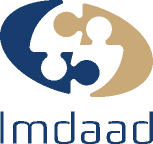 28th April is World Day for Safety and Health at Work, the UN’s annual awareness-raising event. The sheer variety of human roles and equipment involved in facilities management means that health and safety standards are vital in our industry. Imdaad is proud to do its part to help drive forward the UAE’s alignment with global standards.
28th April is World Day for Safety and Health at Work, the UN’s annual awareness-raising event. The sheer variety of human roles and equipment involved in facilities management means that health and safety standards are vital in our industry. Imdaad is proud to do its part to help drive forward the UAE’s alignment with global standards.
Global Standards - Local Focus
The UN World Day for Safety and Health at Work is marked every April and each event concentrates on a specific theme each year. In 2024 it is drawing attention to the impacts of climate change on occupational health and safety. These include excessive heat, air pollution, and UV radiation. Even without the effects of climate change, these would be a core issue in the Gulf region given its natural environment.
Global health and safety trends include a greater emphasis on occupational health, investing in personal protective equipment, and treating employee well-being as just as important as preventing the most serious accidents.
The UAE has incorporated both global trends and local factors into increased regulation and guidance. Recent developments include greater use of technology to improve safety and a growing emphasis on making health and safety an ingrained culture rather than simply concentrating on following checklists.
Health and Safety at Imdaad
 Imdaad continually assesses and monitors health and safety across its operations, with a major review taking place in early 2023. This review helped develop a framework made up of five pillars, 16 focus areas, and 77 specific strategic areas.
Imdaad continually assesses and monitors health and safety across its operations, with a major review taking place in early 2023. This review helped develop a framework made up of five pillars, 16 focus areas, and 77 specific strategic areas.
The five pillars that make up Imdaad’s Health and Safety strategy are:
- Leadership Commitment
- Employee Engagement
- Rules, Roles & Responsibilities
- Reward & Recognition
- Integrated Management Systems
Each one is integral to promoting a culture of collective awareness and responsibility for reducing risk.
This structure isn’t simply about administration or bureaucracy but about reminding employees of Imdaad’s approach. Every health and safety measure is important in its own right but also contributes to an overall program that makes safe practice the default. The changes have already led to a halving in the amount of injuries that led to lost work time.
The work includes combining technology and operational change. For example, a mobile app helps site operation managers walk through health and safety checks, making sure nothing is overlooked. Meanwhile, a programme of site visits by senior staff to monitor health and safety has been introduced alongside a dedicated reporting system makes it easier for staff to flag up any “near misses” that could easily be overlooked. These reports are vital to fixing problem areas before they turn into more serious incidents.
The Future of Health and Safety in FM
 There’s no doubt technology will continue to evolve in the health and safety field and the addition of AI tools in workflows across the industry will introduce extra checks and balances that look certain to increase safety, but no one should overlook the basics. Following global standards will raise safety across the board without businesses feeling they are losing out by doing the right thing. Training remains vital to both address specific risks and improve the overall culture. And management must continue offering support and encouragement to make clear that health and safety measures benefit the business rather than acting as an obstacle.
There’s no doubt technology will continue to evolve in the health and safety field and the addition of AI tools in workflows across the industry will introduce extra checks and balances that look certain to increase safety, but no one should overlook the basics. Following global standards will raise safety across the board without businesses feeling they are losing out by doing the right thing. Training remains vital to both address specific risks and improve the overall culture. And management must continue offering support and encouragement to make clear that health and safety measures benefit the business rather than acting as an obstacle.
Conclusions
The World Day for Safety and Health at Work is an important reminder that the battle to make safety and wellness part of the work culture goes on. It shows that safety and health is a concern for every business, no matter its size, location, or industry.
At the same time, businesses must remember to take the local view. Adapting the big picture message to the specific needs and challenges of a particular company is the only way to turn the awareness day into action.
In turn, individual staff members need to think about what they could do to make a difference. This isn’t just about specific measures related to a task or industry, but about the safeguards, procedures, and principles that make occupational health and safety the default position.

